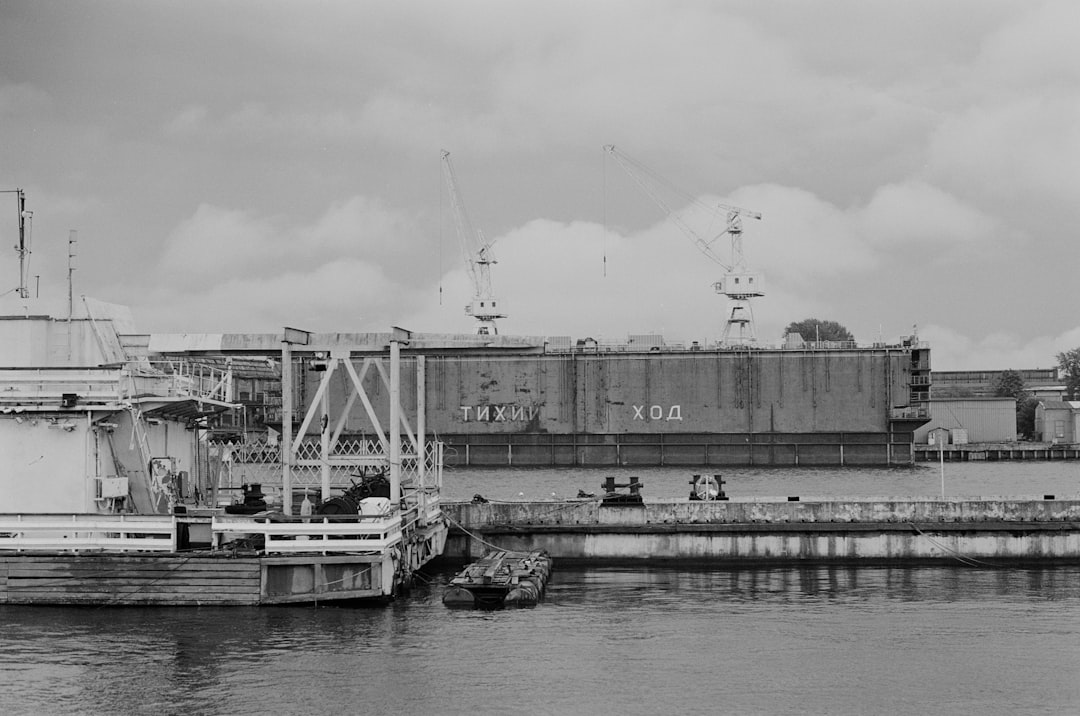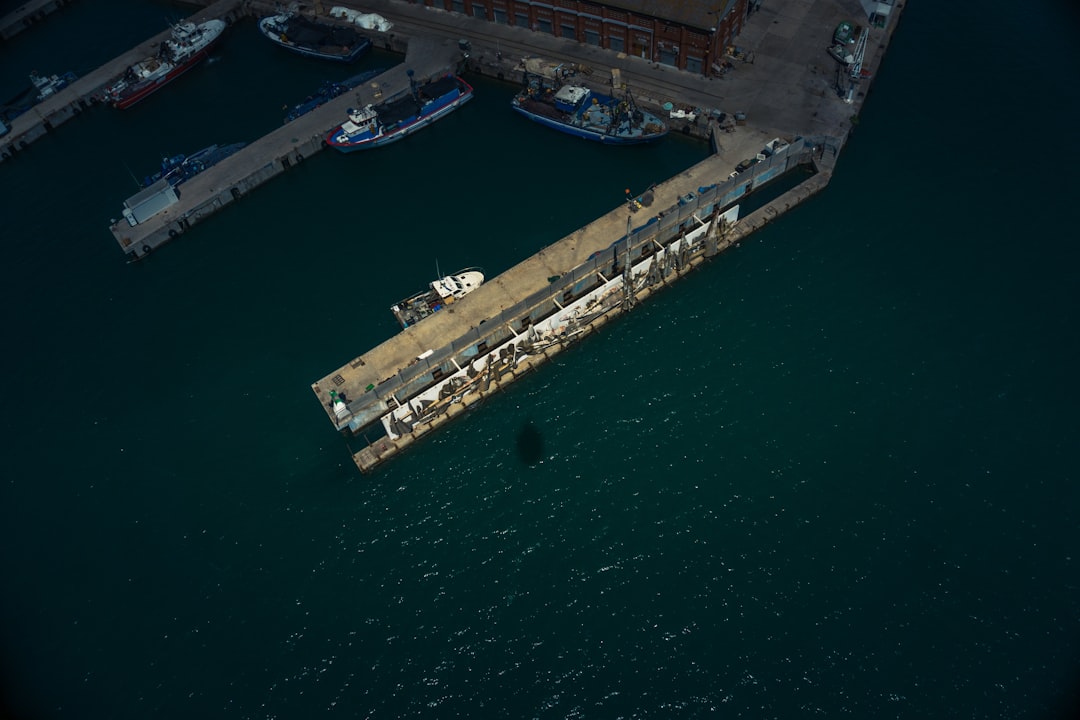

Engage prospects with a scan and streamline customer engagement with FREE QR code marketing tools by Sona – no strings attached!
Create a Free QR CodeFree consultation

No commitment

Engage prospects with a scan and streamline customer engagement with FREE QR code marketing tools by Sona – no strings attached!
Create a Free QR CodeFree consultation

No commitment
The naval supply store industry supports maritime operations by providing essential equipment, technology, and services that keep fleets mission ready. Traditionally, these stores have relied on physical catalogs, printed order forms, and manual inventory tracking, which introduces inefficiencies, makes it easy to lose track of high-value prospects, and limits data visibility during critical procurement decisions.
QR codes are transforming how naval supply stores manage everything from marine equipment inventory to customer engagement. With a single scan, personnel and customers can access product details, reorder forms, service request portals, and real-time support, streamlining operations without complex onboarding or app installs. This direct access also addresses the industry-wide challenge of anonymous or untracked procurement activity, ensuring vital information is captured and enabling stores to act on engagement data.
This guide explores how naval supply stores use QR codes to modernize operations, resolve common pain points such as missed segmentation or wasted spend, and integrate seamlessly across inventory, marketing, and logistics workflows with real-world scenarios.

Naval supply decision-makers often struggle to track which products or services attract the most interest because legacy systems make it difficult to connect physical inventory with digital demand signals. Procurement teams and counter staff move fast, yet paperwork, phone tag, and outdated catalogs slow the process and obscure intent: who is looking at what, when, and why. This lack of visibility leads to missed follow-ups, unfulfilled orders, and incomplete data for critical procurement and asset decisions.
QR codes bridge the gap by linking every physical touchpoint to a digital destination with analytics attached. Labels on shelving units can link to live specs and NATO Stock Number records, asset tags can open service histories and reorder forms, and shipment stickers can connect recipients to setup guides or parts diagrams. The result is a smarter, faster operation where every interaction becomes a data point that can be tracked, measured, and acted on.
Modern platforms such as Sona QR let you manage every QR deployment from a single source of truth. You can update destinations dynamically without reprinting, enforce permissions, and sync scan events to your CRM. Operators can move from disconnected, inconsistent processes to an environment where every customer or crew interaction is captured and actionable. Start creating QR codes for free.

Naval supply stores operate in a high-stakes environment where minor lapses in visibility or communication can lead to procurement bottlenecks, compliance issues, or wasted spend. Buyers and crew members often engage across offline materials and in-person interactions without leaving a digital footprint. Store teams are left guessing which products resonate, which accounts need follow-up, and where to allocate inventory. QR codes solve this by turning every physical touchpoint into a digital entry point, making each prospect, customer, or operator visible and reachable.
The value shows up in daily workflows. A scan on a bin label can trigger a restock request before a stockout. Dockside signage can capture visiting vessels that need rapid provisioning. Technicians can access updated manuals and part compatibility in seconds rather than hunting for paperwork. The net effect is a faster, more accurate supply chain with clear attribution and measurable results.

Not all QR codes serve the same purpose. Choosing the right format ensures your scan point delivers the correct action and the desired data. In naval supply environments, where speed and accuracy are critical, the selection of QR type can make or break adoption.
Static QR codes are suitable for simple, unchanging destinations; dynamic QR codes are preferred for anything that may need an update or tracking. Dynamic formats allow you to change links without reprinting and to collect detailed analytics, which is ideal for high-velocity parts, complex installs, or controlled-access documentation.
Dynamic QR codes are increasingly critical in naval supply contexts. They enable permissions based on rank or role, support authentication for sensitive documentation, and supply analytics that turn every scan into an insight. With Sona QR, you can manage all formats in one place while maintaining security and compliance.
Growth hides in the moments when interest arises but action stalls: a crew member cannot find the right part number, a ship’s agent needs a last-minute provision, or an engineer wants to confirm compatibility. QR codes placed at these critical moments convert attention into action and uncover new revenue opportunities.
Think in terms of high-intent touchpoints and bottlenecks. Where do customers have questions you can answer instantly? Where do handoffs fail or paperwork goes missing? Those are prime locations for QR codes that accelerate conversion and surface valuable data.

The most effective QR deployments align with real workflows and customer needs. When you embed scans into routine actions, you reduce friction, capture data, and guide users toward outcomes that matter.
Start with core moments: product discovery, ordering, and support. Then extend to compliance and asset tracking. Each use case should tie to a measurable outcome, such as a reduction in turnaround time or an increase in repeat orders.
Each QR scan is a micro-conversion that reveals a user’s intent and context. By deploying unique codes across touchpoints and destinations, you can automatically segment audiences and power precise follow-ups that resonate with where the user is in the buying journey. For tactics, see Sona’s Playbook titled Intent-Driven Retargeting: Driving High-Impact Campaigns with First-Party Intent Signals.
In naval supply, distinctions matter. A fleet procurement officer browsing bridge electronics has different needs from a deck crew member looking for safety gear. A visiting vessel scanning dockside signage sends a different signal than a maintenance tech scanning a spare part in a workshop. Capture these nuances with structured tagging and CRM integration.
QR codes unify online and offline efforts so that every touchpoint invites action and every action is measurable. For naval supply stores, this means linking catalogs, signage, and shipments to digital experiences that convert interest into orders and support requests into data-rich workflows.
A coordinated approach improves consistency and conversion. Your brand message remains aligned across print, in-person, and digital channels while scan data reveals which assets and audiences perform best. Use these insights to refine creative, optimize placements, and forecast inventory with greater confidence.
Each scan offers insight for optimizing spend and channel mix. A centralized platform like Sona QR lets you monitor performance across campaigns and sync engagement with your CRM so the next touch is timely and relevant.
Naval supply managers often note that failed digital pilots result from poorly scoped objectives or untested deployment in complex field environments. A structured approach keeps the focus on tangible outcomes, ensures stakeholder alignment, and reduces surprises during rollout. Use the following steps to plan, launch, and scale QR campaigns with confidence.
Strong governance is as important as creative execution. Assign owners for each phase, define success metrics in advance, and run controlled pilots in a single location or product line before scaling across the store network. This helps you validate scannability under real maritime conditions, gather feedback from crews, and refine workflows before full deployment.
Select the moment you want to improve and the metric you want to move. Common naval supply goals include reducing manual paperwork at supply checkout, speeding warranty resolution, capturing dockside demand, or collecting feedback on service turnaround times. Tie the use case to a specific outcome such as reducing average time to submit a maintenance ticket by 40 percent or increasing repeat orders of consumables by 20 percent.
Choose dynamic codes when you need tracking, segmentation, or the flexibility to change destinations without reprinting. Static codes are suitable for fixed, non-critical destinations such as a general homepage or a permanent how-to PDF.
Design each code with clear brand cues and an explicit call to action. A frame with concise copy such as Scan to reorder filters or Scan for install guide increases scan rates. Ensure the destination is mobile friendly, fast, and specific to the user’s context.
Start with placements that address the highest pain points and yield the clearest value. Prioritize supply counters, shipment tags, product catalogs, dockside signage, and event materials. Roll out in phases, learn from scan data, and expand to additional product families and locations as wins accumulate.
Instrument your campaign with analytics from day one. Use dashboards to monitor scan activity by time, location, device, and asset. Identify drop-off points and optimize content, CTAs, or placements. Share learnings across teams to spread what works.
A key challenge for naval supply stores has been connecting in-store or field activity to specific revenue outcomes. Traditional tools excel at reporting web visits or email clicks but struggle to attribute results to offline interactions. QR-based tracking closes this gap by turning real-world engagement into structured digital signals that can be followed from first scan to closed order.
Effective tracking hinges on two pillars: capturing granular scan data and integrating that data into systems of record. With Sona QR and Sona, an AI-powered marketing platform that turns first-party data into revenue through automated attribution, data activation, and workflow orchestration, you can gather the who, what, where, and when of every scan, then map those events to opportunities, quotes, and orders in your CRM. This makes it possible to forecast demand by product family, allocate inventory by route or base, and calculate ROI by campaign. For strategy, see Sona’s blog post titled The Essential Guide to Offline Attribution: Maximizing ROI Through Offline Channels.
Scaling QR success requires repeatable practices, consistent messaging, and tight integration with your tech stack. Start with a few high-impact use cases, then expand to additional departments, locations, and channels as you validate results. Maintain a playbook so that each new deployment benefits from past learning.
Operational realities must guide decisions. Codes should be scannable under rough conditions, destinations must load quickly on low connectivity, and privacy and access control should be addressed up front for sensitive materials. The following tips accelerate adoption and improve ROI.
Creative deployments drive engagement. Consider QR codes on provisioning receipts that open a 3-question satisfaction survey, or on invoices that let customers schedule auto-replenishment for filters and lubricants with one tap.

QR code programs thrive when they solve a real problem and fit seamlessly into daily routines. The most effective examples turn friction points into moments of clarity, speed, and measurable action. Use the following ideas as inspiration for your own pilots and rollouts.
Start small with one product family or location, then scale based on outcomes. Establish baselines for cycle times and conversion rates so you can quantify improvements when QR-enabled flows go live.
Expert execution starts with clarity and ends with iteration. Set objectives that matter, place codes where intent is high, and ensure every scan leads to a fast, relevant experience. Then keep improving based on what the data tells you. Avoid the pitfalls that derail adoption and sap momentum.
Operational settings for naval supply are not forgiving. Lighting shifts, surfaces get scratched, and connectivity can be spotty. Plan for these realities in design and testing. A few practical moves make a big difference in real-world performance.
QR codes empower naval supply stores to bridge the gap between traditional supply chains and the demands of a digitally enabled maritime industry. By removing barriers to information access and ensuring every scan yields actionable data, supply leaders can better predict, serve, and grow their customer base. The payoff is clearer inventory visibility, faster cycle times, higher conversion rates, and a better customer experience for crews and procurement stakeholders.
With Sona QR and Sona.com, operators gain a full-stack approach to QR strategy: generation and management of dynamic codes, real-time analytics, CRM synchronization, and revenue attribution. This combination surfaces opportunities that analog processes miss and enables continuous optimization across operations, marketing, and customer service.
Embracing QR-driven workflows is a proactive strategy for overcoming the persistent challenges that prevent naval supply stores from reaching their full potential. As industry needs evolve, integrating QR best practices ensures these critical supply partners stay agile, resilient, and aligned with the success of every fleet and maritime mission they support.
QR codes have transformed naval supply stores from traditional checkout points into interactive, efficient access hubs. Whether it’s streamlining inventory management, enhancing crew access to critical supplies, or enabling faster, contactless transactions, QR codes replace cumbersome manual processes with instant, mobile-friendly actions that capture real-time data to optimize operational efficiency. Imagine knowing exactly which supplies are most in demand and being able to replenish stock proactively before shortages occur.
With Sona QR, you can create dynamic, trackable QR codes in seconds, update campaigns and access protocols without the need for reprinting, and connect every scan directly to inventory systems and supply chain analytics. No wasted effort, no missed opportunities—just smarter, more responsive naval supply operations. Start for free with Sona QR today and transform every scan into streamlined access, improved logistics, and mission-ready readiness.
QR codes streamline operations by providing instant access to product details, reorder forms, and support portals, improve inventory visibility, capture engagement data, reduce manual errors, and enhance customer service without complex onboarding.
QR codes link physical assets to digital records such as live specs, stock levels, and reorder options, automate supply requests and check-ins, reduce paperwork and duplicate entries, and provide real-time analytics to prevent stockouts and optimize inventory planning.
They enable quick access to warranty checks, service requests, technical support, and product manuals, reduce wait times by automating data capture, and create measurable engagement that helps stores respond promptly to customer needs.
Stores use QR codes on shelf labels, equipment asset tags, outbound shipments, dockside signage, service counters, trade show materials, and direct mail to digitize product info, automate maintenance tickets, capture dockside demand, collect feedback, and segment audiences for targeted marketing.
By placing QR codes on print collateral, social media, direct mail, digital signage, and events, naval supply stores drive users to mobile-optimized landing pages, quote forms, and content, capturing scan data that enables personalized follow-ups and retargeting campaigns.
High-value or high-velocity assets such as tools, safety gear, consumables, technical equipment, and inventory bins can be tracked with QR codes linking to product profiles, service histories, reorder options, and compliance information.
Use Sona QR's trackable codes to improve customer acquisition and engagement today.
Create Your FREE Trackable QR Code in SecondsJoin results-focused teams combining Sona Platform automation with advanced Google Ads strategies to scale lead generation

Connect your existing CRM

Free Account Enrichment

No setup fees
No commitment required

Free consultation

Get a custom Google Ads roadmap for your business






Launch campaigns that generate qualified leads in 30 days or less.
